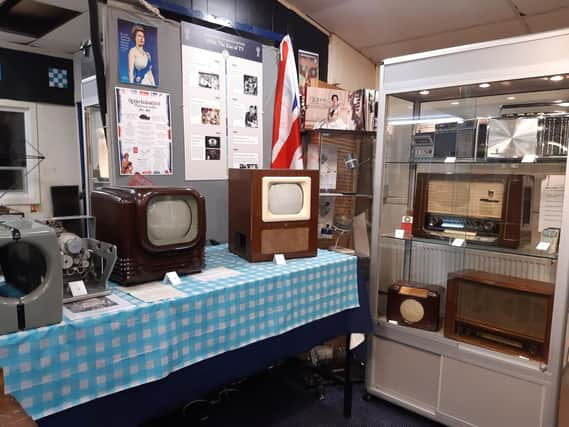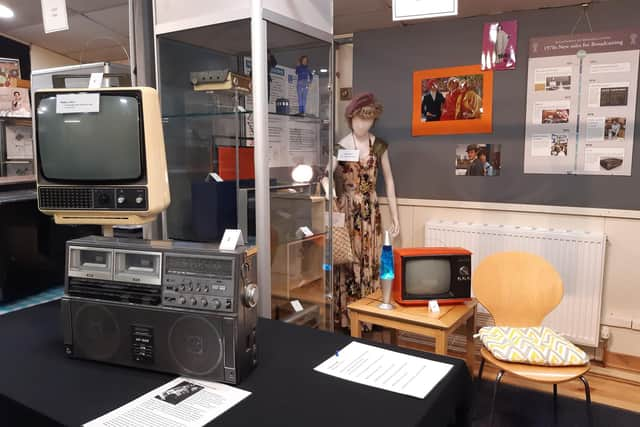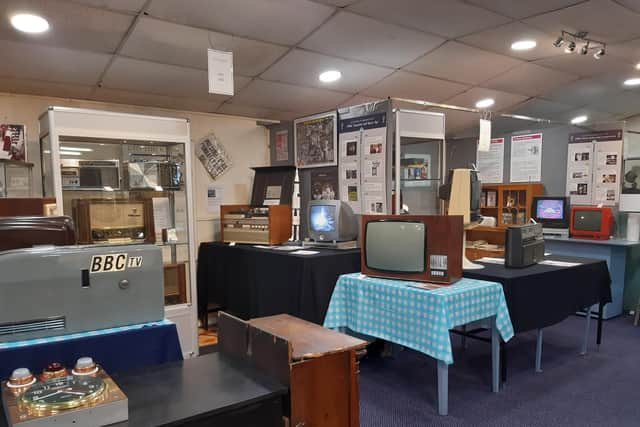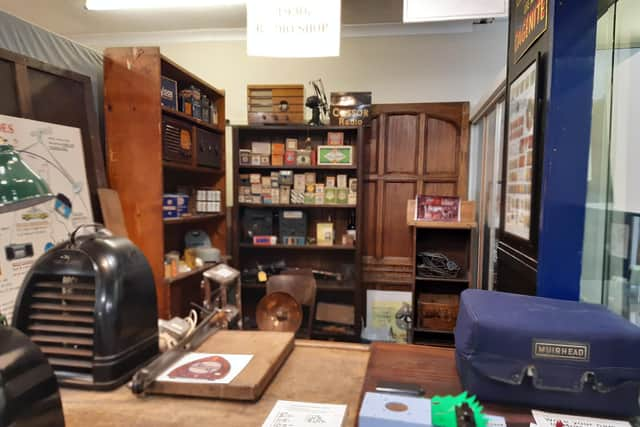Looking back at 100 years of British broadcasting at Burntisland's Museum of Communication


However, the latest summer exhibition currently running at the Museum of Communication in Burntisland reminds us of the technology of the past and how far things have come over the course of the last century.
The museum, which can be found at 131 High Street, is currently hosting an exhibition Celebrating 100 years of British Broadcasting from 1922 to 2022.
Advertisement
Hide AdAdvertisement
Hide AdIt’s a great opportunity to learn about the history of broadcasting and technology and well worth a visit.


The exhibition has been put together with a timeline taking visitors on a trip down memory lane, travelling through the decades from the 1920s until the present day.
John Blackie, from the museum, said: “We have been unable to open our summer exhibitions for the last two years due to Covid so we’re pleased to be able to welcome visitors again this year.
"We probably have around 6000 items in our collection which we’ve gathered over the years, with many donated, representing communications technology since the 18th century telegraphs.
Advertisement
Hide AdAdvertisement
Hide Ad"This year our exhibition focuses on the period between 1922 and 2022, and we are only showing a small representation of our collection.


"The idea is to represent 100 years of broadcasting.
"It’s a huge topic so we can only scratch the surface.”
The exhibition charts the first 100 years of scheduled broadcasting in Britain, with a timeline highlighting famous radio and television programmes and events, illustrated by items from the museum’s collection spanning everything from crystal set radios and valve wirelesses to TV cameras.
It takes a look at great moments in broadcasting history, as well as celebrating royal broadcasting in the Queen’s platinum jubilee year.


John continued: “We have broken things down into the different decades, with a section on each.
Advertisement
Hide AdAdvertisement
Hide AdWe start in the 20s when broadcasting was setting off and we see the early experimental nature of broadcasting.
"Then in the 30s, which are often referred to as the golden age of radio we start to see an interest in design and a radio is something you’d have in your living room.
"We see the influence of the war on radio and television then moving forward we start to see in the 50s the popularity of television, in fact the inevitable rise of television starts to replace radios.
“By the 60s we’re seeing colour TV and in the 70s designer TV and we start to see transistors being used.
Advertisement
Hide AdAdvertisement
Hide Ad"By the later 80s we started to see video recorders and consumer electronics that was populated by cassette players, ghetto blasters and music on the street.
"By the 90s we’re seeing high spec televisions being introduced that contain LCDs for the first time.
"For the last part of our display we show the modern era when there’s very little to display.
"The mobile phone and smart TVs have taken over broadcasting for the most part for everyone.”
Advertisement
Hide AdAdvertisement
Hide AdThe exhibition is the latest offering from the Museum of Communication, which is an independent museum run entirely by volunteers.
The Museum of Communication Foundation Trust was established in 1992 and after a number of temporary locations, a permanent home was found in Burntisland when the current premises were bought in 2003.
The museum first opened its doors to the public in 2005 for a brief World War Two display, ‘VE+60’ and since then the volunteers have been hosting regular exhibitions each year.
Volunteers also work closely with schools to engage young people in communications and technology and the museum also hosts a series of lectures throughout the year.
Advertisement
Hide AdAdvertisement
Hide AdThe exhibitions have covered a vast range of topics over the years, with a different theme chosen each year.
There’s still time to visit the current exhibition, which runs until September 24, 2022.
The museum is open to visitors on Wednesdays and Saturdays from 11am to 4pm.
Admission is free but donations are welcome.
To find out more about the museum, its exhibitions and how you could get involved visit https://museumofcommunication.org.uk/
Comment Guidelines
National World encourages reader discussion on our stories. User feedback, insights and back-and-forth exchanges add a rich layer of context to reporting. Please review our Community Guidelines before commenting.